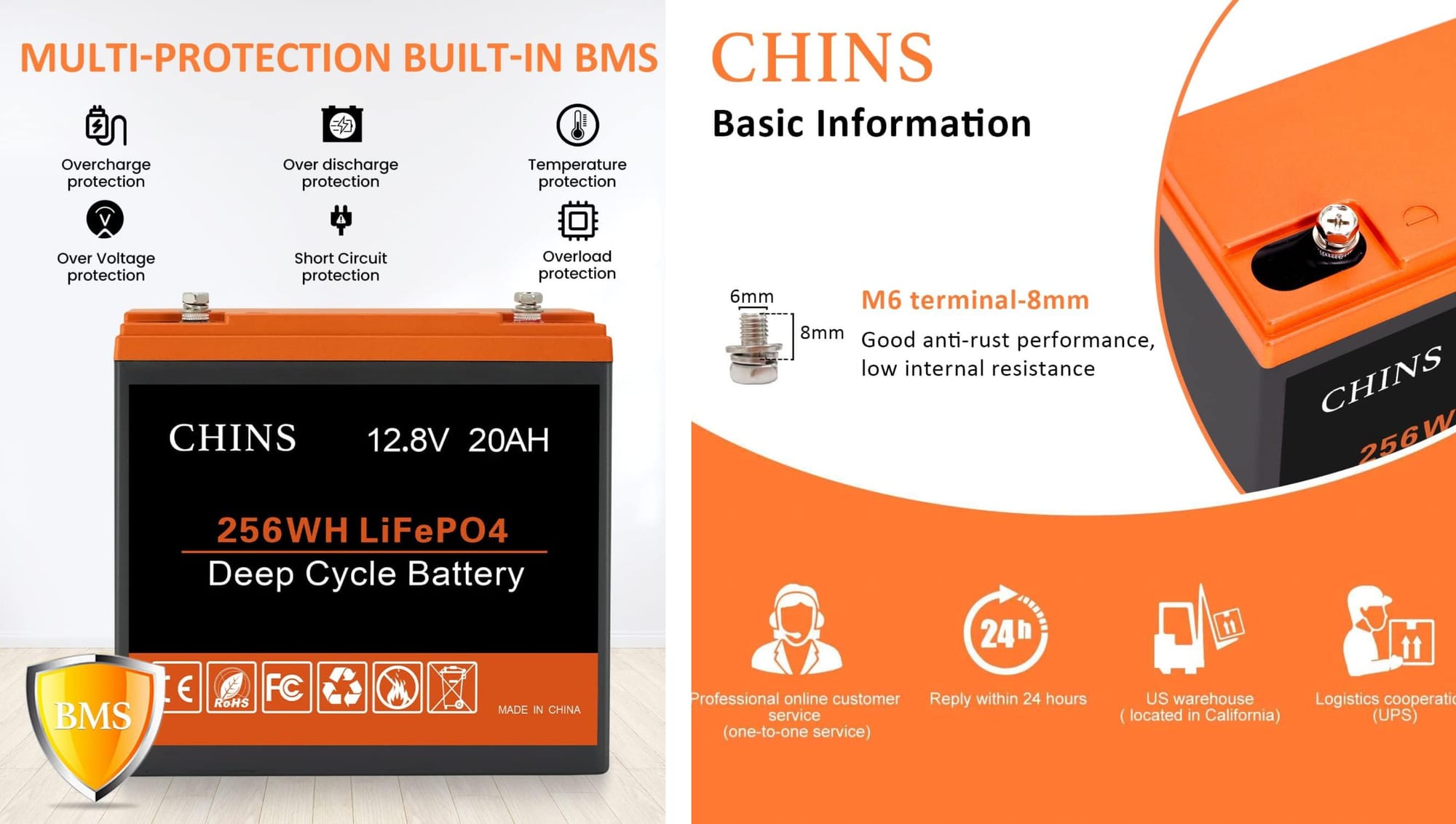How to Extend the Lifespan of an LFP Battery
By following these steps, you can ensure your LFP battery delivers reliable performance for years.

Key Takeaways:
- Proper charging habits significantly impact the longevity of LFP batteries.
- Environmental factors play a crucial role in battery health.
- Regular maintenance and monitoring can prevent premature battery failure.
Understanding LFP Batteries
LFP batteries, or Lithium Iron Phosphate batteries, are known for their stability, safety, and long cycle life. They are widely used in electric vehicles, solar energy storage systems, and various portable electronics. Unlike other lithium-ion batteries, LFP batteries offer a higher thermal and chemical stability, making them less prone to overheating and combustion.
However, like any other battery, LFP batteries require proper care and maintenance to maximize their lifespan. Understanding the unique characteristics of LFP batteries is the first step in ensuring they serve you well for years to come.
Optimal Charging Practices
Charging habits are crucial for extending the life of your LFP battery. Avoid charging the battery to 100% or letting it drop to 0%. Instead, aim to keep the battery level between 20% and 80%. This practice reduces the stress on the battery cells and prolongs their life.
Using a smart charger that automatically adjusts the charging rate can also be beneficial. These chargers prevent overcharging and overheating, which are common causes of battery degradation. Always use chargers recommended by the battery manufacturer to ensure compatibility and safety.
Temperature Management
Temperature is a critical factor in the health of LFP batteries. Extreme temperatures, both hot and cold, can significantly reduce battery life. Ideally, LFP batteries should be stored and used in environments where the temperature ranges between 20°C and 25°C.
If you live in an area with extreme temperatures, consider using thermal management systems to regulate the battery temperature. For instance, electric vehicles often come with built-in cooling and heating systems to maintain optimal battery conditions.
Avoid Deep Discharges
Deep discharges, where the battery is drained to near 0%, can be detrimental to LFP batteries. Frequent deep discharges can lead to a significant reduction in the battery's overall capacity and lifespan. To avoid this, try to recharge the battery before it drops below 20%.
Using battery management systems (BMS) can help monitor the battery's state of charge and prevent deep discharges. These systems provide real-time data and alerts, ensuring you can take timely action to protect your battery.
Regular Maintenance
Regular maintenance is essential for keeping your LFP battery in top condition. Periodically check the battery terminals for any signs of corrosion or damage. Clean the terminals with a mixture of baking soda and water to prevent corrosion from affecting the battery's performance.
Additionally, inspect the battery casing for any cracks or leaks. Physical damage can compromise the battery's safety and efficiency. If you notice any issues, consult a professional for repairs or replacements.
Proper Storage
If you need to store your LFP battery for an extended period, ensure it is stored in a cool, dry place. The battery should be charged to around 50% before storage to prevent over-discharge. Avoid storing the battery in direct sunlight or near heat sources, as this can accelerate degradation.
Using a storage case or container can provide additional protection against environmental factors. Make sure the storage area is free from moisture and dust to maintain the battery's integrity.
Monitoring Battery Health
Keeping an eye on your LFP battery's health can help you catch potential issues early. Use battery monitoring tools to track the battery's voltage, temperature, and state of charge. These tools can provide valuable insights into the battery's performance and help you make informed decisions about maintenance and usage.
Many modern devices come with built-in battery monitoring systems. If your device lacks this feature, consider investing in an external monitoring tool. Regularly reviewing the data can help you identify patterns and take proactive measures to extend the battery's lifespan.
Avoid Overloading
Overloading your LFP battery by connecting too many devices or drawing excessive power can lead to overheating and reduced lifespan. Always check the battery's specifications and ensure you are not exceeding its maximum load capacity.
Using a power management system can help distribute the load evenly and prevent overloading. These systems can automatically adjust the power distribution based on the connected devices, ensuring optimal performance and longevity.
Use Quality Components
Using high-quality components and accessories can make a significant difference in the lifespan of your LFP battery. Cheap or counterfeit chargers, cables, and connectors can cause damage and reduce the battery's efficiency.
Always purchase components from reputable manufacturers and ensure they are compatible with your battery. Investing in quality components may have a higher upfront cost, but it can save you money in the long run by extending the battery's life.
Avoid Physical Damage
Physical damage to your LFP battery can compromise its safety and performance. Avoid dropping or mishandling the battery, as this can cause internal damage and reduce its lifespan. If you need to transport the battery, use a protective case to prevent accidental damage.
In case of any physical damage, consult a professional for inspection and repairs. Attempting to fix the battery yourself can be dangerous and may void the warranty.
Regular Cycling
Regular cycling, or charging and discharging the battery, can help maintain its health. However, it's essential to follow the recommended charging practices and avoid deep discharges. Regular cycling helps keep the battery's chemistry active and prevents capacity loss.
If you use your LFP battery infrequently, consider performing a full charge and discharge cycle every few months. This practice can help maintain the battery's performance and extend its lifespan.
Avoid High Discharge Rates
High discharge rates, where the battery is drained quickly, can cause excessive heat and stress on the battery cells. This can lead to a reduction in the battery's overall capacity and lifespan. To avoid high discharge rates, use the battery within its recommended limits and avoid connecting high-power devices.
Using a battery management system can help monitor the discharge rate and prevent excessive stress on the battery. These systems can provide real-time data and alerts, ensuring you can take timely action to protect your battery.
Environmental Considerations
Environmental factors, such as humidity and air quality, can impact the health of your LFP battery. High humidity levels can cause corrosion and reduce the battery's efficiency. Ensure the battery is stored and used in a dry environment to prevent moisture-related issues.
Air quality is also essential, as dust and pollutants can affect the battery's performance. Regularly clean the battery and its surroundings to maintain optimal conditions.
Use Battery Management Systems
Battery management systems (BMS) are essential for monitoring and protecting your LFP battery. These systems provide real-time data on the battery's state of charge, voltage, temperature, and other critical parameters. They can also prevent overcharging, deep discharges, and high discharge rates.
Investing in a quality BMS can help extend the lifespan of your LFP battery by ensuring it operates within safe limits. Many modern devices come with built-in BMS, but you can also purchase external systems for additional protection.
Avoid Prolonged Inactivity
Prolonged inactivity can lead to capacity loss and reduced lifespan of your LFP battery. If you plan to store the battery for an extended period, ensure it is charged to around 50% and stored in a cool, dry place. Regularly check the battery's state of charge and recharge it if necessary.
Using the battery regularly can help maintain its health and prevent capacity loss. If you use the battery infrequently, consider performing a full charge and discharge cycle every few months.
Invest in Quality Batteries
Investing in high-quality LFP batteries from reputable manufacturers can make a significant difference in their lifespan. Cheap or counterfeit batteries may have inferior materials and construction, leading to reduced performance and safety risks.
Research and choose batteries with good reviews and a proven track record. While high-quality batteries may have a higher upfront cost, they can save you money in the long run by providing better performance and longevity.
Summary
Extending the lifespan of your LFP battery involves a combination of proper charging habits, temperature management, regular maintenance, and using quality components. By following these best practices, you can ensure your LFP battery serves you well for years to come.
Regular monitoring and proactive measures can help you catch potential issues early and protect your investment. If you need a new LFP battery, click the button below to explore our selected options, ensuring long-lasting performance for years to come.

